
Once upon a time I was the QUEEN of scented candles. I had them for every season and every occasion and I LOVED stock-piling them, burning them, giving them as gifts, shopping for them — I love it all. Our house had that underlying fragrance of scented candles ALL the time — and unknowingly, I absolutely loved it. So what changed and why did I ditch these toxic ambiance creators and instead go for organic candles?
Well, through a series of life events and finally opening my eyes to what was actually in the candles I had at home, I knew I had to make a change. It wasn’t until I really made myself look into the ingredients and materials used in scented candles that I finally saw what I was exposing myself and my family to toxin-wise. I think that’s often the first step — forcing yourself to read and research a product that you really love but haven’t come to terms with yet. I hadn’t researched before because I didn’t WANT to read the bad stuff on scented candles. I wanted to live in my ignorant bliss and keep those candles burning.
And the reason I didn’t want to know what was in candles is because ultimately I was scared of the change I would feel I had to make. Change is often hard, and we like our routines and life just as is.
Once I realized that I could still freshen my home with a safe product and I didn’t have to ditch scented candles completely, I knew it was time to move forward. Knowing my options and finding organic candles that I loved was key in making a positive change for our house.
TOXINS IN SCENTED CANDLES AND REGULAR CANDLES
So what makes candles so harmful to have in your home? To start let’s remember that the act of burning scented candles means that any toxin in the candle is getting a fast track into the air inside your home. This is why even some candles that appear to be safer actually are not any better than standard scented candles. (STUDY)
Paraffin Wax: Paraffin wax is the most common material that candles are made of. This type of wax is made from a chemically bleached petroleum waste product, which we know pollutes our indoor air. It is also a known carcinogen. Paraffin wax, when burned, also releases another dangerous chemical into the air — toluene . Toluene has been shown to negatively affect the central nervous system as well as the neurological system in our bodies. (STUDY)
Benzene is another chemical that is often emitted when paraffin wax candles are burned. Benzene is a natural gas and crude oil element that is used as a solvent, however it’s very toxic to our bodies and has been known to cause cancer. (BENZENE INFO)
Synthetic Fragrance: I feel like I mention synthetic fragrance on a daily basis, but it’s for good reason. Synthetic fragrances are TRULY everywhere, and they are filled with chemical toxins we really don’t need to be exposing our bodies to. Synthetic fragrances are filled with phthalates (hormone disruptor), petrochemicals (birth defects, nervous system disorders, allergies and cancer) as well as VOCs that quickly enter our indoor air.
When these candles are burned, the synthetic fragrances enter the air quickly and oftentimes stay around for a long period of time in the air. Manufacturers add chemicals to the fragrance to make it last as long as possible in the air, which means you’re exposed to it for longer periods of time.
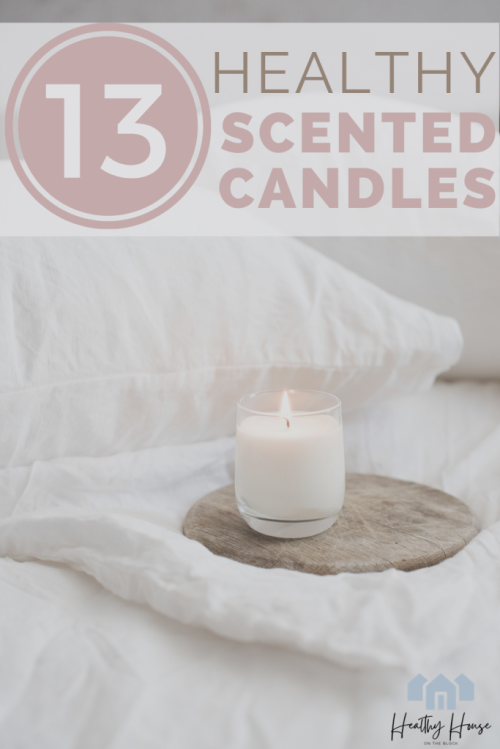
Metal Core Wicks: Some candles can contain wicks that have a metal core that contains lead and zinc. A study done in Michigan showed that burning a candle for just 2 hours can result in airborne lead concentrations that are dangerous to our human bodies. What’s more is that the lead in the candle fumes deposited on the floor, walls and furniture where children were exposed due to their hand-to-mouth habits. (STUDY)
Dyes: Many synthetic dyes contain dangerous chemicals such as naphtha and naphthalene. These two chemicals are a possible carcinogen but also cause issues with the gastrointestinal system as well as neurological degeneration. (INFORMATION). Again, because these toxins are in a candle that is burned, the toxins enter our air and can deposit on surfaces. Infants and children are even more susceptible to health repercussions from these toxins.
Soy Candles: Because soy is a genetically modified material, you can bet that it’s not going to be the best option for your home. Because they’re genetically modified they are often sprayed with toxic pesticides during growth. Most soy candles also still contain small amounts of paraffin wax, which when burned, enters our air and deposits on surfaces.
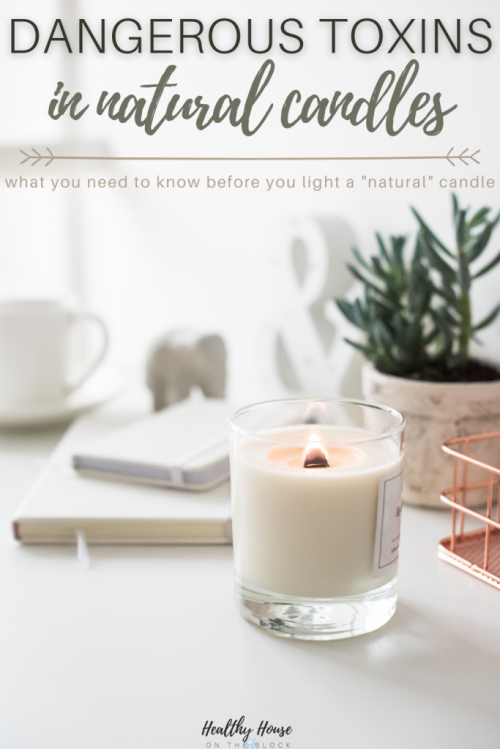
WHAT TO LOOK FOR IN ORGANIC CANDLES
Once you’ve ruled out all the harmful additives to candles, it’s important to know how to shop for organic candles and find the healthiest option for your home. While you can add fragrance and ambiance to your home in other ways, having organic candles at home is a really nice option.
Beeswax Candles: Beeswax is not only a toxin free option for a candle material, but it’s also a material that can positively support your environment at home. Beeswax releases negative ions into the air, the same way an air purifier would. Typically, common allergens and pollutants have a positive charge. When the negative ion is released, it binds to the positive ion and is either burned by the candle or it falls to the ground (the exact reason dusting and vacuuming are a MUST to keep indoor air healthy).
Unfortunately there have been no formal studies done on this, and so it’s hard to say how much a beeswax candle benefits the air, but we do know it’s not contributing to the problem at least. If you can try to find organic beeswax with no GMOs. An organic candle will only contain organic wax as well.
Cotton Wick: A 100% cotton wick is best when it comes to candles. If you’re able confirm that it’s organic cotton and free of any pesticides, that’s an even better option.
Essential Oil Fragrances: This can be a tricky ingredient to verify. There are so many terms that may infer a candle uses natural scents and fragrances, but really what’s being used is a made-to-smell-natural-scent. Verify that the candle you’re getting is using 100% pure essential oils ONLY for added fragrance.
Certified Organic Candles: You can find USDA certified organic candles once you start looking. Not all organic candles will be certified as many candles are handmade by artisans.
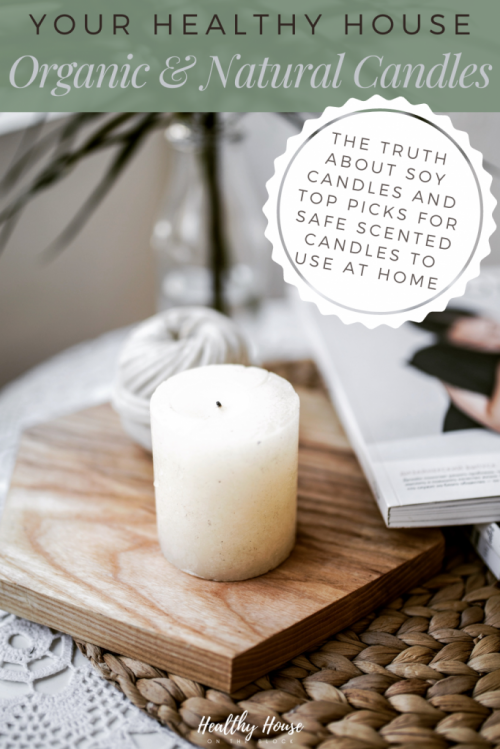
Add Your Heading Text Here
Essential Oil Diffuser: Besides candles, this is my TOP and FAVORITE way to add fragrance to my home. This diffuser is the one that I use at home and it’s my absolute favorite with a ceramic outer cover and an extra large reservoir. I also love that it’s easy to clean.
You can purchase just a few essential oils to make a number of different fragrance blends at home. I use Plant Therapy for my essential oils as they have an expensive line of USDA Certified Organic Essential Oils. This way I know they are free from pesticides and are not adding additional toxins to our indoor air.
Room Freshening Spray: If you’re finding it hard to ditch products like Febreze or other room sprays, I would encourage you to make your own. You can also make one that can be used on upholstery, drapes and other textiles to freshen them up.
DIY Natural Room Freshening Spray:
4 oz mL glass spray bottle (I love these frosted glass spray bottles)
- 1 tablespoon witch hazel
- ½ cup distilled water (will make sure your room spray stays fresh longer)
- 30 drops of essential oils or one of the following blends
Happy Home:
- 10 drops Bergamot
- 5 drops Clary Sage
- 4 drops Lavender
Calming Vanilla:
- 8 drops Grapefruit
- 8 drops Sandalwood
- 8 drops Vanilla
- 6 drops Bergamot
Clean Citrus:
- 15 drops Grapefruit
- 15 drops Lime
- 10 drops Lemon
- 5 drops Bergamot
Cinnamon Cookie
- 15 drops Sweet Orange
- 10 drops Cinnamon
- 5 drops Clove
Flowers in Bloom
- 10 drops Geranium
- 10 drops Grapefruit
- 6 drops Ylang Ylang
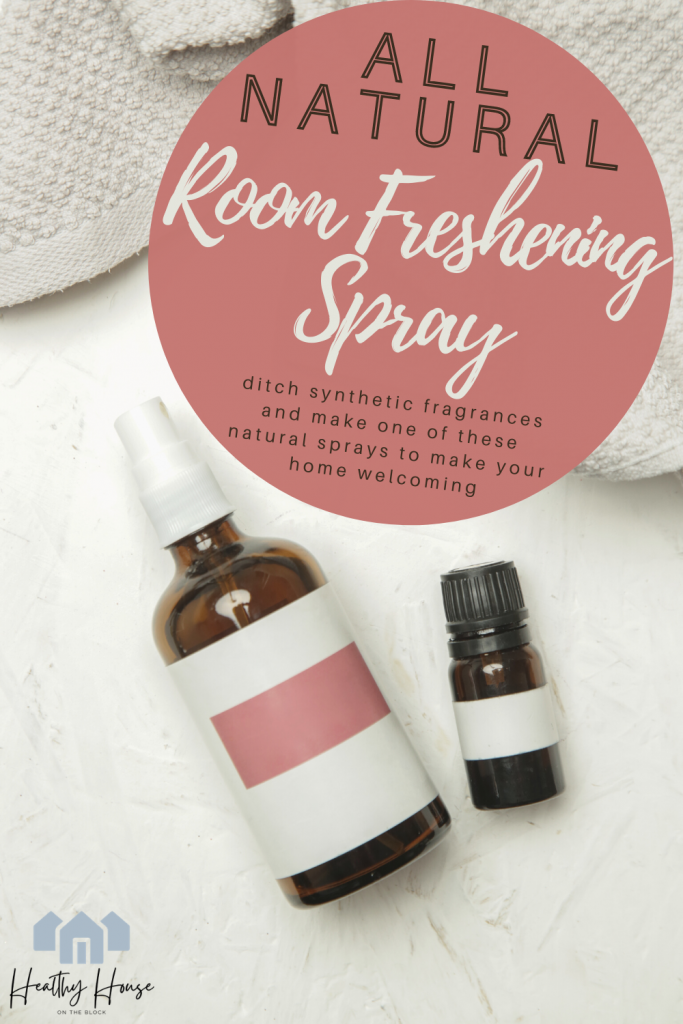
Charcoal Odor Absorbing Bags: These charcoal odor absorbing bags are one of my favorite ways to take odors out the air. Sometimes it’s not that you need to add fragrance, but it’s that you need to clean the air inside your home from cooking smells or other odors. These bags can be reused and reused by just “recharging” them in the sunshine once they’ve done their job. We keep them in closets and near the kitchen garbage.
StoveTop PotPourri: This Christmas, one of our neighbors sent us this adorable jar with cranberries, dried oranges, pine sprigs, cinnamon sticks and cloves. All we did was add it to a pot of water on the stove and it left our home smelling absolutely AMAZING. It was a great way to add some fragrance to the air without using a candle or other toxic air freshening product.
Air Purifier with Ionizing Option: In our home we have a MedifyAir Air Purifier. It’s a medical grade air purifier to clean the indoor air, but it also has an ionizing option to remove odors from the air as well. The ionization process works where the negative ions produced by the air purifier “grab” the positive ions in the air (most toxins and allergens). It then causes the ions to fall to the ground where they can be vacuumed up rather than breathed into our lungs.

1. Ceramic Diffuser | 2. Stovetop Potpourri | 3. Charcoal Odor Absorbing Bags | 4 Homemade Room Spray | 5. Organic Candles | 6. MedifyAir Air Purifier
TOP PICKS FOR ORGANIC CANDLES & NON TOXIC SCENTED CANDLES
Below are some of the places I like to buy my organic candles:
Etsy Natural Candles:
- Blossom & Wildwood Co.
- Bath and Wick Shop
- Natural Sloth
- Suzees Candles
- Cedarwood Minimalist
- Five Bees Yard
Amazon:
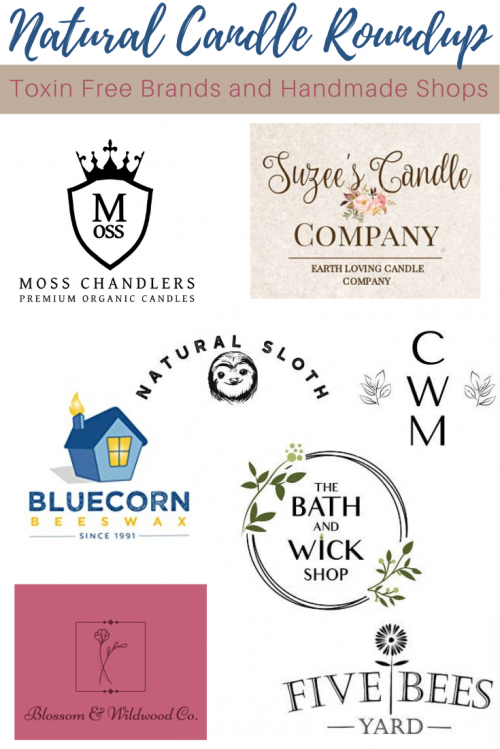

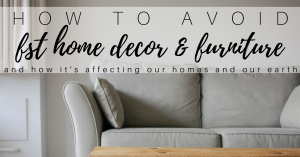


This was great information. Thank you so much. I never realized i was using paraffin waxed candles for about 5+ yrs. (Scary to think).
I will be definitely sharing this info and your channel.
Be well.